How an interview with a rapist fired up Serbia’s feminists
A controversial article sparked street demonstrations in Belgrade, which mobilised a women’s movement to fight for bigger change.
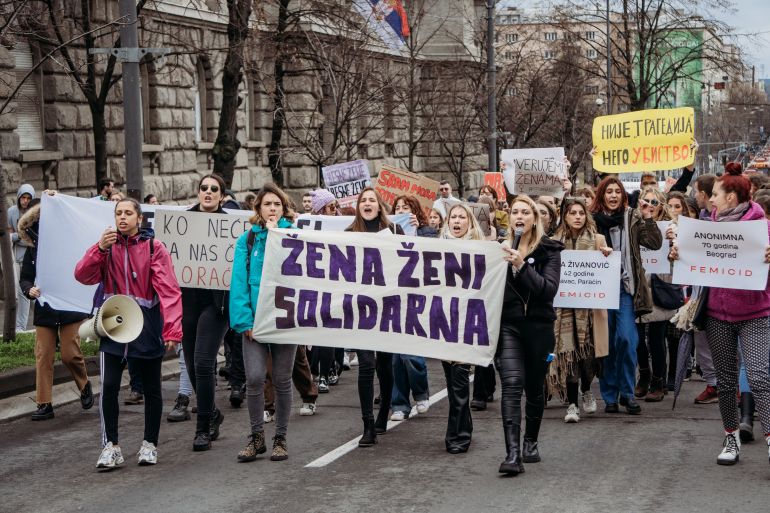
Belgrade, Serbia – Even though six months have passed, Branka Blizanac still remembers the moment she learned that a tabloid in Belgrade had interviewed a serial rapist who had recently been freed from prison.
“The moment I saw the announcement for this interview, I felt humiliated,” the 22-year-old recalls, sitting in a coffee shop in the centre of the Serbian capital, her large glasses covering part of her face beneath a fringe and curly brown hair. “I remember thinking: How should we, as women, live in a society where rapists tell us freely, through the media, how to behave while they rape us?”
Keep reading
list of 4 itemsPoland lawmakers take steps towards liberalising abortion laws
Polish lawmakers debate reforming strict abortion laws
Why has Arizona re-enacted a 160-year-old abortion ban?
In the interview published in September by the pro-government Informer newspaper, Igor Milošević, who had served a 15-year sentence for numerous rapes and physical assaults on women, not only instructed women on how to behave during an attack but also described how liberating it was for him to commit his crimes. “While I was raping and robbing, I felt freedom,” he said. He also threatened the female journalist who interviewed him, telling her, “If I decide to rape you, I will.”
Blizanac, a history student and co-founder of Ženska solidarnost (Women’s Solidarity), a Belgrade-based women’s collective, believes that in many ways, the tabloid made Milošević a celebrity. His movements were regularly reported on by Informer journalists, who advised women and girls to buy self-defence tools and avoid walking alone at night.
Displeased with the tabloid and determined that the voices of women should be heard, Blizanac and other members of her collective urged women to protest. Since September, five street demonstrations have taken place in Belgrade.
The demonstrations exceeded Blizanac’s expectations. Hundreds of demonstrators whistled, held placards and chanted slogans like, “All to the streets! Justice for women and girls” and “The women’s revolution!”
It was the first time Ženska solidarnost had organised events of such significance, and Blizanac says she felt both stressed and thrilled.
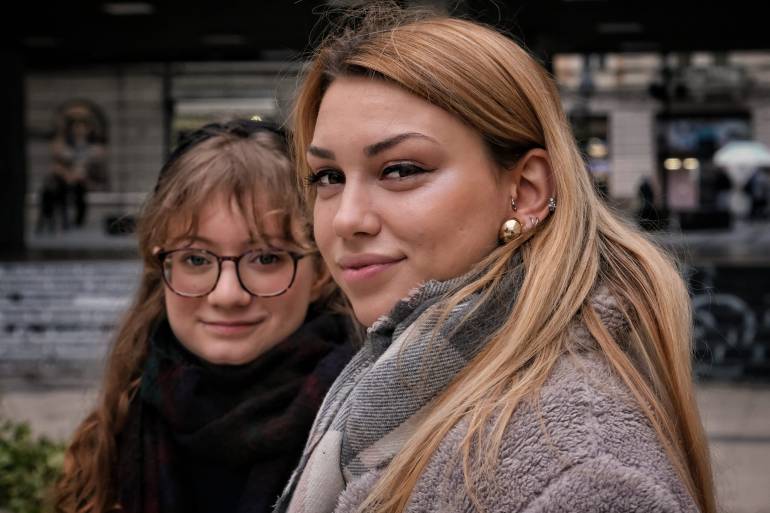
The collective began in 2018 as a Facebook group where women shared stories about domestic violence. The demonstrations helped it evolve into a protest movement.
Now Ženska solidarnost aims to draw attention to violations of women’s rights in Serbian society and to promote the idea of sisterhood and political solidarity among women while pushing for legislative changes to protect women at a national level.
“No woman is responsible for the violence which a man subjects her to. We took that anger to the streets,” Blizanac says, adding that the collective hopes to continue its demonstrations when the snow melts.
‘Women in power have done little’
At first glance, Serbia has made steps towards gender equality. Since 2017, the country has had a female prime minister, Ana Brnabić, while the number of female lawmakers in parliament in the past decade has regularly been about 35 percent and is now the second highest (PDF) in the region behind only North Macedonia.
But critics say political representation hasn’t translated into real equality for Serbian women.
“Women in power have done little for other women,” says Biljana Stojković, one of three co-leaders of the leftist Together political party and its presidential candidate in the 2022 election. “And even though they [female lawmakers] could have been more active, they themselves decide to limit their role and fulfil the expectations of their own political circle. This is especially sad with Brnabić.”
Brnabić, the first woman and first openly gay person to hold the office of prime minister, was nominated by Aleksandar Vučić, Serbia’s nationalistic president, and is considered a Vučić loyalist. Stojković said she believes the nomination of a female prime minister was intended to create a veneer of equality to advance the country’s European Union membership and to distract international observers from something more sinister.
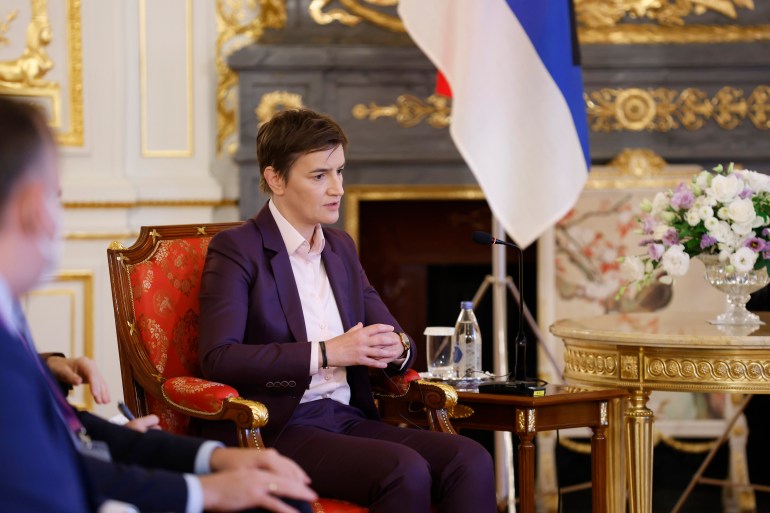
Since taking office in 2017, Vučić has eliminated nearly all domestic checks on his power, filled key posts with loyalists and helped them to assert control over many state assets. According to a 2022 report (PDF) by the Woman to Woman (Kvinna till Kvinna) Foundation, a Stockholm-based women’s rights organisation focusing on the Balkans, this democratic backsliding has contributed to a worsening environment for female activists and independent journalists, some of whom have faced physical attacks and threats. The report also points out that women are significantly less represented on the regional level: In 2021, 13 percent of local governments had female mayors or presidents.
“One can’t really say that women are a driving force in Serbia,” says Stojković, Vučić’s contender in the last election – she won 3.3 percent of the votes. She points out that Vučić himself remains the main decision-maker. “In essence, nothing has changed,” she says.
Jelena Riznić, a 25-year-old sociologist and member of Ženska solidarnost, says the fact that someone is a woman and a lesbian doesn’t guarantee her politics will be feminist.
Sitting in the coffee shop next to Blizanac, Riznić explains that Brnabić has never promised to fight for the rights of women or the LGBTQ community.
“Her politics was clear from the very beginning,” Riznić says. Shortly after taking the post, Brnabić described herself as “a technocratic prime minister”, which many critics interpreted as confirmation that her role is to implement the policies of Vučić.
Riznić points out that the Serbian opposition is in many ways as misogynistic as the ruling party. “[They] know exactly when to abuse Brnabić’s sexual orientation by referring to her as a man on TV,” she says.
Patriarchy and toxic masculinity
Putting aside political power struggles, there are many more challenges that Serbian women face. According to a 2019 survey by the Organization for Security and Cooperation in Europe, 34 percent of Serbian women aged 18 to 74 have experienced physical or sexual violence by a partner at least once since they were 15.
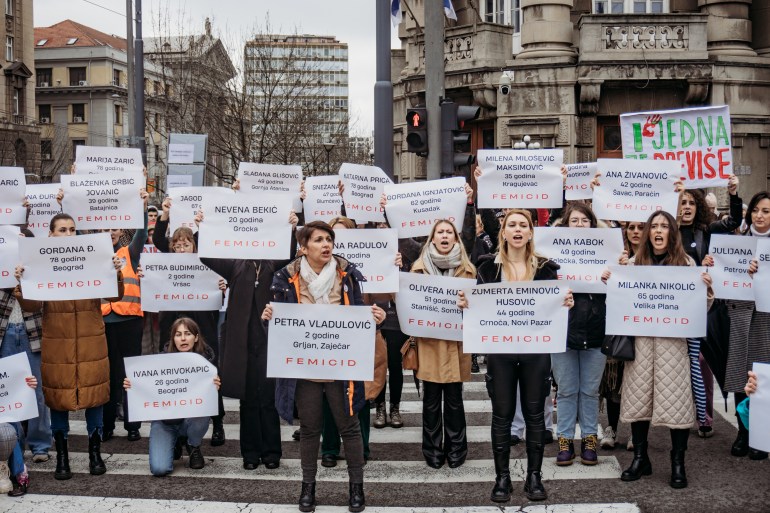
According to a 2020 report by the Council of Europe’s Group of Experts on Action Against Violence Against Women and Domestic Violence, Serbian women and girls are often afraid to report their abusers because convictions for most forms of violence against women are “extremely low”.
In 2021, 20 cases of femicide, the intentional killing of women or girls due to their sex, were reported in Serbia. It was the highest number in the region. More than 74 percent of these crimes take place in a family or intimate partner context, according to a 2020 study by the FemPlatz Civic Association, a Serbian women’s rights organisation.
In the 2016 documentary film The Victim Has a Woman’s Face, which explores the problem of violence against women in Serbia, journalist Ana Manojlović interviewed men who had killed their female partners. One of them told her that he had stabbed his wife to death because she invited friends over to their house and flirted at parties.
That kind of feeling of ownership and superiority over women is widespread in Serbia, as in many other post-communist countries, according to Višnja Baćanović, a gender equality consultant and trainer based in Novi Sad in northern Serbia. She explains that there is “no real alternative” to “toxic masculinity”, suggesting that modern beliefs of sensitivity towards gender and sexual identities have not taken root in Serbia. “The patriarchal schemes of behaviour still dominate the [Serbian] landscape,” she says.
She explains that this traditional mentality is the bedrock of many other everyday issues, including women’s low participation in the labour market (44 percent compared with 62 percent of men in 2022) and household decision-making. Women in Serbia are still generally seen as being responsible for cooking and cleaning while men usually have control over household spending, according to a 2020 report (PDF) by the US Agency for International Development.
“Many men are under pressure from the society, which tells them what the man is ‘supposed’ to be,” Baćanović says, explaining that Serbian culture often promotes an image of dominant men while women are either viewed solely as homemakers or sexualised.
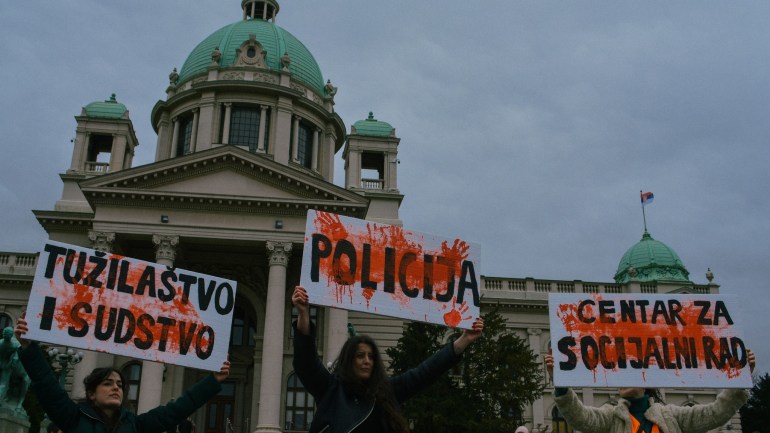
Riznić says you only need to “drive on the highway to see sexualised women’s bodies used in sports betting advertisements or to get a sponsored ad on Instagram about a nightclub”. She recalls one advertising campaign last year by the Serbian branch of the international environmental organisation World Wide Fund for Nature, or WWF, that was widely criticised as sexist. One of the ads showed a woman’s leg emerging from what appears to be a shower with the inscription “Don’t touch my fish.” It was supposedly intended to draw attention to the problem of endangered species of fish. When media outlets and social media users criticised that ad and others in the campaign, the WWF apologised and deleted them.
‘Troublemakers’
Stojković says women who speak out or participate in public life risk being stigmatised. Society looks at them as “some kind of extreme elements, troublemakers”, she explains.
Ženska solidarnost wants to combat this image by encouraging women to make themselves heard and fight for legislative change. Contrary to a popular local saying, “Woman is wolf to woman,” meaning that women view one another as enemies, Blizanac and Riznić say the believe that only together will women make a difference.
Baćanović, however, points out that feminist organisations like Ženska solidarnost have a limited impact on women from Serbia’s rural areas, where traditional cultural practices are more persistent and access to information more limited.
She feels they can contribute to changing Serbian society. “But not now,” she says. “The change should be defined. They need to know what they want to achieve besides taking the people to the streets.”
Still, she praises the collective for its creative and innovative approaches, raising awareness among younger audiences and using social networks and educational activity to get their message across.
“They are shaking the patriarchal structures, which are strong in Serbia and constantly send the message to women, ‘You have to be quiet and polite,’ despite the fact that our rights are regularly violated,” Baćanović says.
“Women in Serbia are really p***** off, and we need these kinds of rebels to voice the problems.”